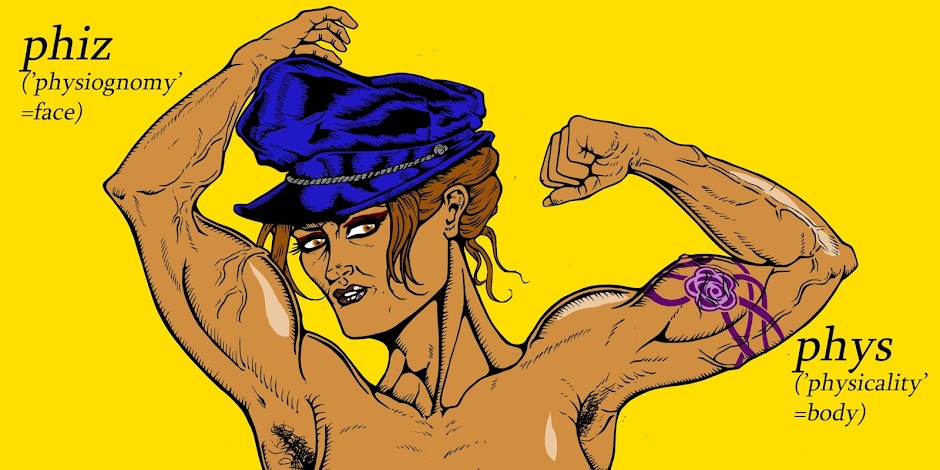Mary Beth Edelson
Having only recently discovered the ‘goddess’ art of Edelson
whilst researching the works of Annie Sprinkle, this will be only an initial
sketch of my impressions of her work, but it seems destined to feature more
heavily as research continues. Her photographic collages or montages combine
elements of mythology, folklore, spirituality, mark-making, art history and
popular culture (sometimes with an obvious sense of humour) – all subjects and
ideas which have heavily influenced my work over the years.
The untitled
work in ‘Illustration 1’ presents Edelson’s nude body, decorated with elements
of life and death: the ancient (and almost universal, being recorded across
multiple human cultures and ages) spiral motif enveloping the belly, and a
string of human skulls (both suggesting the death/rebirth duality inherent in
the Hindu goddess Kali) with a Sheela-na-gig head superimposed upon the
artist’s own. This reference to the puzzling Celtic fertility figures, usually
found in British churches and often portrayed in sexually explicit poses,
embodies eternal femininity in all its forms – transcending borders and genres,
the work also cleverly obscures the model’s genital region in a move which
renders the body somewhat non-gendered (or bi-gendered, if we wish to interpret
the scarf/tail motif as a surrogate penis, rising up from the groin area). This
deliberate ambiguity renders the body of the model as a genuinely mythological
form, a being not constructed by social or cultural dogma, but referencing the
origins of all human life – not just its source (from the female body), but in
the fact that all humans in an embryonic stage embody this duality and ambiguity,
with definable biological sex detectable via ultrasound usually only after 4
months or so of growth in the womb). The figure arises out of the earth,
towering into the air, suggesting both power, integration (feet rooted in the
earth, hands and head in the sky, traversing the elements of both male and
female symbolism), and also worship – the drawn elements of the arms may
indicate waving, or some form of ritualistic, ecstatic movement, or even a
simple playful gesture of personal freedom and pleasure.
 |
| Illus. 1 |
Illustration 2, entitled ‘TV Head Spirit’, deals with similar imagery and ideas, but rather than referencing the ancient (Sheela-na-gig), it juxtaposes a television set with a body representative of the eternal feminine. My reading of this is that, as TV now takes the place of religion in telling people how to think and behave, Edelson’s primal matriarch has ‘taken control’ of this media and form of communication for her own ends, presenting a message of female empowerment and individuality contrary to the traditional norms of female domesticity and glamour that would have been prevalent in 1973 (the date, seemingly, of the making of the piece – see bottom right corner). This idea of appropriating the medium of the orthodox hegemony is one I have deliberately pursued myself in recent times, as a queer/nonbinary individual in the white/cis/straight male-dominated genres of comic book work and extreme heavy metal music. Herein, the medium is indeed the message: Edelson’s feminist spirit has ‘possessed’ the physical form of the TV set.
 |
| Illus. 2 |




No comments:
Post a Comment